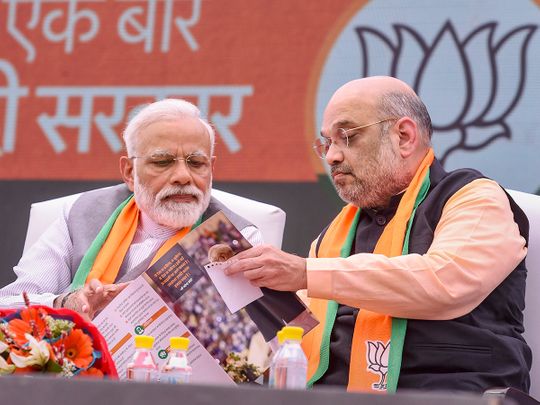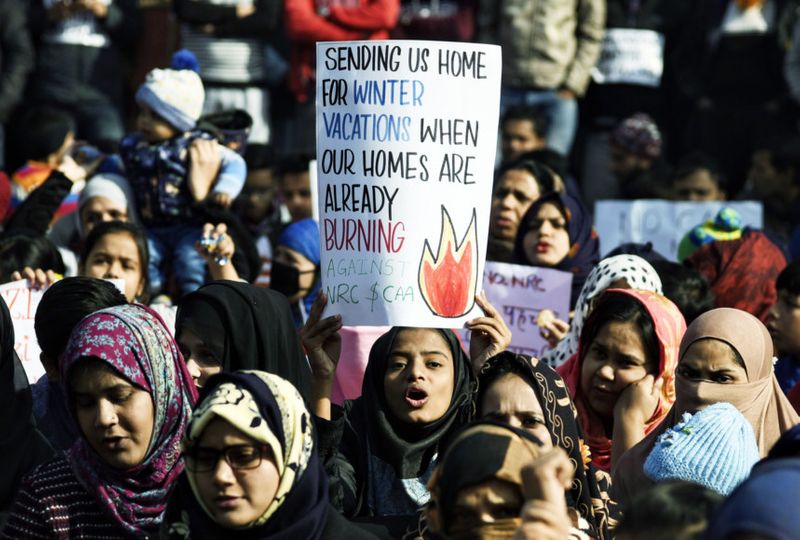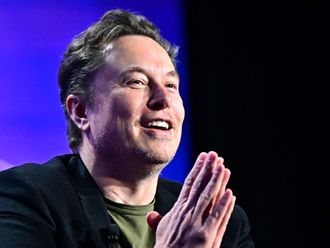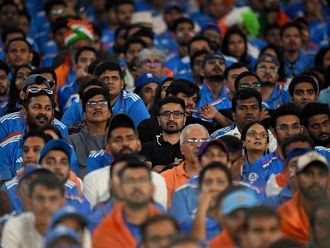
The essence of this untoward year for India has been the growing tensions between the State and society. All of it was in full display as more than 20 people died last fortnight in the protests that broke out against the Citizenship Amendment Act (CAA).
Clubbed with the impending National Citizen’s Register/National Population Register, which potentially subjects all residents in India to fresh documentary inspection, the act is considered discriminatory to Muslims, who number 200 million in India.
The imbalance between the State and society is not just a straightforward confrontation; unlike many other countries, India is in the process of turning hard to tackle a society that is quintessentially soft or, to put it simplistically, secular.
Shah doesn’t just carry battle to the enemy’s camp; he wades in. Where a swat is enough, Shah gamely engages a bulldozer. Each battle is seen as the last. But it is not. Which is why every few weeks, before the dust settles on the previous one, a new offence is mounted, new ruins sought. If nothing, there could be an arrest
The year began bloodily. The ‘backward concatenation of events’ as Eliot would put it, traces the Modi government’s aggressive stance as articulated in the Pulwama operation in Kashmir in which a suicide bomber blew up an army convoy, killing 40 soldiers.
This led to a lockdown on a separatist-infested Kashmir, polarising further an already divided civil society across the country. For its part, the incumbent Modi government extracted political capital out of the incident as the general election was scheduled to be held in summer.
If Kashmir was here, Pakistan was never far away. The situation escalated as patriotism was in question. Surgical strikes were ordered into Pakistan territory. An Indian Air Force pilot crashed his jet in the enemy territory. Pakistan arrested and, later, released him. The elections happened as war clouds hung over the Indo-Pakistan border and by May-end, Narendra Modi had been sworn in again as prime minister.
Tensions between the State and society exacerbated further as the new home minister, Amit Shah assumed charge. I believe his appointment is the single biggest factor of the polarisation in the country. There is probably no more potent a weapon in the Bharatiya Janata Party (BJP) arsenal than Shah to effect changes so massive as to alter the nature of the Indian State.

Communal flavour
Despite the best charitable tastings, almost everything that Shah has cooked in his kitchen has a communal flavour. The declaration of Kashmir as a Union Territory and the abrogation of Article 370 (conferring special status to the Valley) are just the first of a series of saucy servings.
The communication clampdown in the Valley has been in force for more than 5 months now, spurring resentment of society at large, which now seems to have found traction, and a renewed articulation on social media, though the liberal posts and comments are as incendiary as their rivals in the Right camp. An assembly election in Kashmir had been vaguely promised. But once curfew is relaxed and internet back in place, there would be unrest; and it would catch national and international attention. An election would be inconceivable under the circumstances.
Shah doesn’t just carry battle to the enemy’s camp; he wades in. Where a swat is enough, Shah gamely engages a bulldozer. Each battle is seen as the last. But it is not. Which is why every few weeks, before the dust settles on the previous one, a new offence is mounted, new ruins sought. If nothing, there could be an arrest.
Putting the former finance and home minister P. Chidambaram in jail on charges of corruption (he has been released since), for instance, completely unsettled the Congress Party. This year has been largely Shah’s show. So much so that the floundering economy — all indices are down, and the GDP has fallen to a record low of 4.5 per cent — has not got the attention it deserves.

Violent protests
Shah’s parliamentary cluster bombs help keep the BJP ranks energised and united, and the Opposition in a state of constant distraction. But the Citizenship Amendment Act appears to have shown the BJP just how far it could push its political agenda.
From all appearances, the violent protests had no real leaders. But the lesson for the BJP is that the urban youth, who surely had a chance to vote for the Opposition and chose then not to do so earlier in the year, has now swung over to become the salvation army of society.
How deep this movement is suspect. Despite strong initial waves of protest in the border states of Assam and Tripura in the beginning of the fortnight in question, and then parts of Uttar Pradesh and Karnataka in the later phase, and a peaceful rally in Mumbai, it would be fair to say that the epicentre of the agitation was Delhi, and its students.
In a recent issue (November 9, 2019) of ‘The Spectator’, reviewing ‘The Narrow Corridor: States, Societies and the Fate of Liberty’, by Daron Acemoglu and James A. Robinson, Jay Elwes says: ‘Freedom for the masses is a historical rarity. It arises only as a fine balance between competing interests.’ That is, competing interests between the State and the society. A domineering State could be a problem.
As also, a traditional society: ‘Take the caste system, which confines millions of Indian citizens to menial, often, degrading work, and prevent their full participation in the economy.’ Here, in this specific case, the State is too weak, the author says, to enforce the run of the law over society. The Modi government is investing new powers in the State. Society is resisting. And traditions are changing. Please note: in none of the neighbouring countries, some of them Islamist, does one see a similar civil unrest. And India is supposed to be a stable democracy.
2019 seems to have brought the main underlying tensions to a head between a changing State and a changing society. It would need a proactive Opposition to give leadership to the correctional forces that society churns up. It is possible that one of the most spontaneous civil protests in recent Indian history have come and gone in a political vacuum.
2019 began with Modi’s triumph at the hustings. It ends with a poll defeat in the Jharkhand assembly elections. A local party, Jharkhand Mukti Morcha (JMM), in alliance with the Congress, emerged victorious. The JMM is not the most transparent of parties. So it is not clear, Jharkhand, between the divisive BJP and the rather corrupt JMM had a real choice. That means patterns are likely to repeat: protest, violence, and frustration. More of it then in 2020.
Which brings us to the point: 2019 was unnecessary. But then history is mostly despite one’s best wishes.
— C.P. Surendran is a senior journalist based in India.










